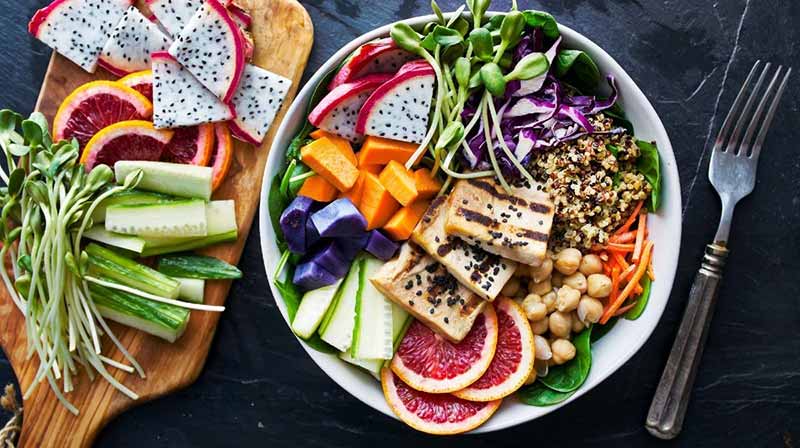To effectively build muscle it is essential to intake an adequate quantity of protein. Proteins are available in both animal and plant-based foods, but the quality and quantity of proteins derived from the two sources are not the same. Animal-based foods are considered a better source of complete protein, while plant-based foods often lack one or more essential protein ingredients.
However, research has shown that there is no difference in the outcomes between those who eat a plant-based diet and those who eat animal-based foods, with both able to build muscle with adequate protein intake. In other words, it is possible for everyone to increase muscle mass while eating a plant-based diet. But it needs to be approached in a specific manner.
To understand how to build muscle on a plant-based diet, we need to start with the basics. During weight-bearing exercise, microscopic tears are created in muscle fibers which lead to inflammation and increased blood supply to the affected area. This brings lots of nutrient substances to the area that help repair and grow muscle tissue. Proteins are one of those substances.
Proteins are made up of smaller building blocks called amino acids. There are many types of amino acids, but 20 of them are considered essential to maintaining your body’s healthy functioning. Meat from animals contains all of the essential amino acids your body needs, while plant-based foods often lack one or more essential amino acids. Because muscle-building is directly reliant on having enough available protein, people looking to increase muscle need to combine different plant-based foods to ensure they receive all the essential amino acids.
Our muscle fibers break down all the time and need to be replaced in order to prevent muscle loss. Also, as we begin to age we start losing muscle tissue. Beginning at around the age of 40, the loss of muscle tissue continues for the rest of our lives, negatively impacting our metabolism, endurance, and balance. So, as we age, it is important to ensure we maintain and even gain muscle mass by consuming foods that provide adequate protein supplies.
Nutritionists recommend including the following four categories in each plant-based meal:
- A carb element, which can be cauliflower, quinoa, tortillas, brown rice, or full-grain bread
- A hearty element like tofu, mushrooms, chickpeas, lentils, or seitan
- A fresh element, like leafy greens, fresh herbs, tomatoes, bell peppers, zucchini, noodles, pomegranate seeds
- A creamy element like cashew cream dressing, avocado sauce, protein pesto hummus, or creamy tofu ranch
There are numerous benefits to consuming less (or no) meat. And, not surprisingly, at the top of the list are benefits to your personal health, especially on heart health because plant-based foods are low in saturated fat and high in unsaturated fat. Replacing saturated fat with unsaturated fat is one of the most effective ways to lower cholesterol levels.
The other effective way to lower cholesterol levels is to increase fiber intake with plant-based foods that are high in fiber. This is important because heart disease is the number one cause of death in many places around the world. Increasing plant foods also increases the amount of antioxidants we consume, which help fight off inflammation and decrease risk for numerous diseases like certain cancers and cardiovascular disease.
If you are completely cutting out animal products, stay mindful of nutrients like vitamin B12, iron, zinc, calcium, selenium, and omega-3 fatty acids in your diet by consuming good plant-based sources of these foods, or even supplementing your diet with vitamin B12. The plant-versus-animal protein teams have become very polarized in recent years, and it has diverted people from the important nutritional message that a diverse diet is best.

